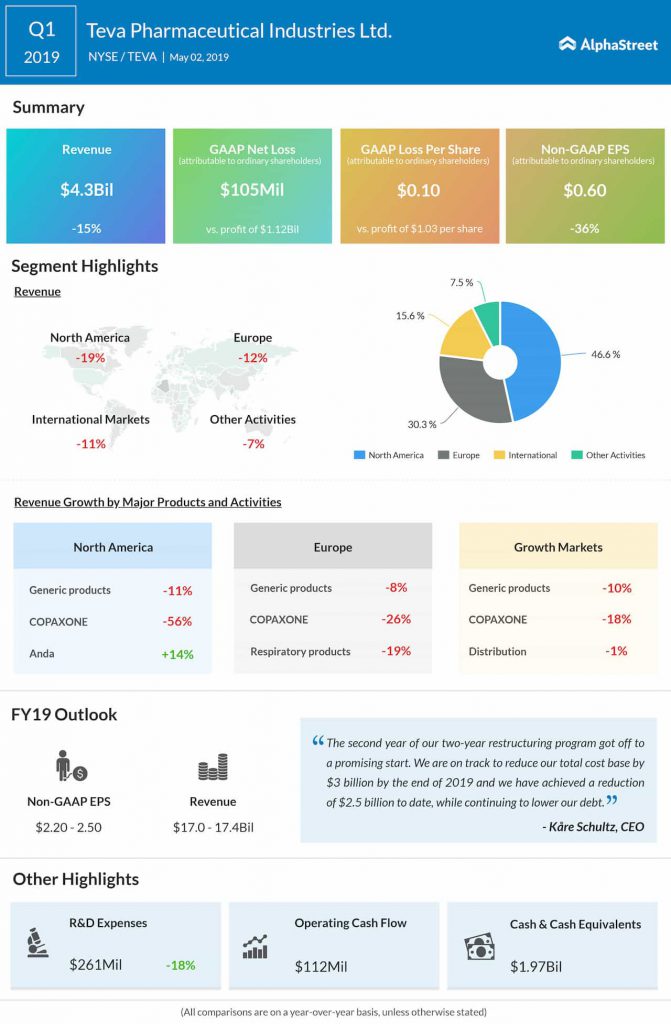The size of the generic drug market in the US is so large that about 90% of all prescription medicines sold last year was generic. The sector is estimated to grow further as more and more branded drugs lose patent protection. In the last couple of years alone, the FDA granted approval for more than 2,000 generic drugs.
Rising competition and pricing pressures are the main challenges facing the industry, impacting sales and margins. Another negative factor is the rising costs, especially research and development expenses. The companies also incur high costs associated with patent litigation as they usually develop the generic version of a particular formulation when its branded version loses patent exclusivity. It makes the business unsustainable for the companies that operate on wafer-thin margins.
Also see: Top biotech stocks to be considered for investment this year
The Remedy
Reaffirming its resolve to make low-cost generic drugs available to the public, the FDA earlier this month revealed a slew of initiatives to streamline the development and approval processes. Efforts are also being made to reduce the approval timings and make submissions more efficient. The general outlook for the sector is positive and experts forecast it will stabilize this year, with several branded drugs facing loss of exclusivity.

Going forward, operational efficiency of the firms is expected to improve sharply – after the large-scale consolidation activity the sector witnessed last year, including the CVS-Aetna merger and Cigna-Express Scripts deal. The changing environment will also enhance margin growth and reduce costs this year and beyond. China continues to be a lucrative market for US pharma companies, despite the hostilities between the governments in the wake of the trade war.
Perennial Price Pressure
Nevertheless, there will be continued pressure on the companies to keep the prices low, from multiple quarters including customers, the political fraternity and regulatory agencies. Though the aggressive stance taken by the Trump administration last year against price hike came as a warning for the companies, many of them raised prices even after that call.

Recently, the sector was rocked by widespread allegations of collusion among the top firms to inflate the prices of popular drugs, blatantly undermining the purpose for which the concept of generic drug development was coined. The incident is estimated to have affected the beneficiaries of the government’s healthcare programs and the healthcare insurance sector.
Price-fixing Scandal
Most of the US states joined hands to seek action against the companies involved, including Teva Pharmaceutical (TEVA), Mylan (MYL) Sandoz/Novartis (NVS) and Pfizer (PFE), who allegedly hatched a conspiracy to fix the prices. Their stocks suffered after the market reacted negatively to the news. The findings were the result of investigations into the unholy nexus between the senior executives of the pharma companies, dating back to 2014.

Teva, which is already in trouble after an $85-million settlement in the recent opioid misuse case, is probably the worst affected by the federal lawsuit. The stock, which hit new lows almost every week in the past year, does not show any sign of recovery. The market’s caution amid fears of a sharp fall in generic drug prices following the Medicare reform has added to the negative sentiment.
Also read: Can Walgreens and CVS Health resist the online invasion
The condition of Mylan, Pfizer and Sandoz/Novartis was no different, with the stocks incurring major losses after the incident came to light. It is alleged that the companies entered into a secret agreement not to compete with each other and to keep the prices elevated. They reportedly communicated in coded language to prevent the conspiracy from being exposed. Prices of as many as 1,000 popular generic treatments, mainly diabetes, cancer and arthritis drugs, were fixed.
Most Popular
CL Earnings: Key quarterly highlights from Colgate-Palmolive’s Q2 2024 financial results
Colgate-Palmolive Company (NYSE: CL) reported its second quarter 2024 earnings results today. Net sales increased 4.9% year-over-year to $5 billion. Organic sales increased 9%. Net income attributable to Colgate-Palmolive Company was $731
Key takeaways from Visa’s Q3 2024 earnings report
Credit card behemoth Visa, Inc. (NYSE: V) this week reported mixed results for the June quarter, with earnings matching expectations and sales slightly missing the view. Both numbers grew in
Southwest Airlines (LUV): A look at the airline’s performance in Q2 2024
Shares of Southwest Airlines Co. (NYSE: LUV) were up over 6% on Thursday after the company beat earnings estimates for the second quarter of 2024. The stock has gained 4%